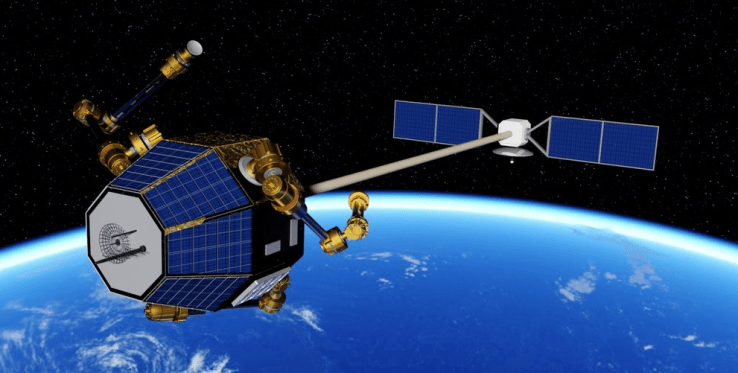9.05.2017

Made In Space, Inc. is known as the company behind the 3D printers on board the International Space Station. Astronauts have used the startup’s AMF, or Additive Manufacturing Facility, on the ISS to churn out everything from finger splints to tools, sculptures and even other printer parts.
Now, the company is revealing a video rendering of its larger Archinaut system, a factory in the sky operated by autonomous robots. The Archinaut can produce and assemble large equipment, such as satellites or even entire spacecraft, while in orbit.
According to Made In Space CEO and president Andrew Rush, “It’s our ambition to develop the manufacturing technologies that will usher in the era of true commercial space utilization.” Literally, he is hoping to enable colonization of other planets, with millions of people living and working in beautiful, microgravity environments.
The company believes, he said, “Manufacturing things in space lets us unlock possibilities you can’t when you have to design things to survive launch.” During launch, tremendous forces push down on any spacecraft and the people within, obviously. Rush added, “Any time you can pack more efficiently, and save mass, it helps make new missions possible or current missions more cost-effective.”
Some of the biggest scientific and engineering challenges the company faced when developing the Archinaut were around material choices and hardware. The company had to determine which materials could be used for its own systems’ parts, as well as to be extruded by the system and assembled and used in space.
“You have to figure out what can survive and provide good strength and longevity, while standing up to wild temperature swings, radiation and atomic oxygen environments which try to eat away at your parts,” Rush said.
On the hardware side, the company couldn’t simply mimic 3D printer designs that work well on earth. Those are typically built as boxes that pump out items smaller than their own build area. “It’s simply not an option to fly a 50-meter cube to space to print out 20-meter satellite reflectors,” Rush said.




Instead, the company devised what it calls ESAMM, an “extended structure additive manufacturing machine.” In essence, it works like a team in a glassblowing studio who move around manipulating materials while they are still pliable, and then assemble and sometimes fuse or bolt large pieces together. Rush described it as a kind of “inside out” printer that doesn’t have a limited build area.
The printer (reflected in the video embedded here) is about the size of a school kid’s backpack, and can manufacture a truss structure that’s several meters long, or even longer, if users kept adding feedstock to it. The company is agnostic about where material feedstock comes from. Its systems can make use of in situ resources like material mined from asteroids or recycled space debris.
A NASA-funded project, the Archinaut Development Program also involves Northrop Grumman and Oceaneering Space Systems as subcontractors. Currently, the company has built one Archinaut system for a commercial customer that it does not yet have permission to name. It has the ambition to fly more missions and build more Archinaut systems in the near future.
With 40 full-time employees based at the NASA Ames Research Center in San Jose, Calif., Made In Space has never taken on venture funding. But the company has been profitable every year since it was founded in 2010, which may surprise some of the new space startups still finding their way.
Why not raise equity funding? “As we were getting started, we realized we were on a really big mission, to help people live and work in space,” said Rush. “We think this is a long-term vision. And given the complexity and scope of the work this will take, it would be hard to promise VCs a return for their investment along the traditional time frame.”
Quelle: TC
